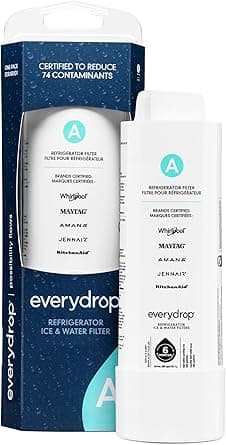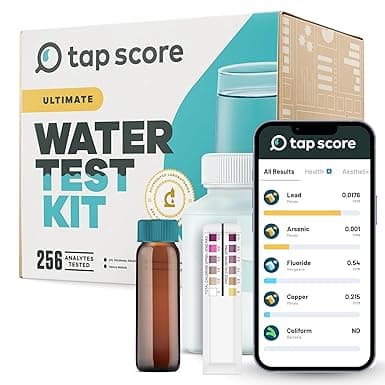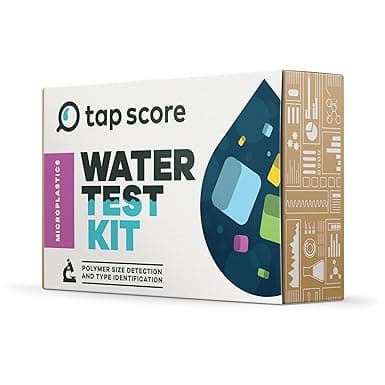Priest River Tap Water Quality Report
Priest River's water has 5 contaminants above EPA MCLGs. We recommend using a certified water filter.
Utility
PRIEST RIVER WATER
People Served
2,173
MCL Violations
0
Last Updated
Mar 15, 2022
Is Priest River Tap Water Safe to Drink?
Priest River's water has 5 contaminants above EPA health-based guidelines. We strongly recommend using a certified water filter to reduce exposure to these contaminants. Check our filter recommendations below for NSF-certified options that can remove the specific contaminants found in Priest River's water.
The data below shows test results from PRIEST RIVER WATER SYSTEM, which serves 2,173 people in the Priest River area. Water quality testing is conducted regularly and reported to the EPA. This report was last updated Mar 15, 2022.
Priest River Water Quality Test Results
Key Water Quality Metrics
Contaminants Detected
⚠️ Contaminants Above EPA MCLG (5)
Total THMs
What is Total THMs?
Group of contaminants that form in drinking water systems when a disinfectant, typically chlorine, reacts with organic matter
Health Effects
Drinking water standards for total THMs are based on evidence of carcinogenicity in human and animal studies, as well as liver and kidney toxicity observed in animal studies. Individual THMs have been further associated with developmental, immune, spleen, and genotoxicity.
Affected Organs
Common Sources
Radium 228
What is Radium 228?
Radium-228 is a radioactive isotope of radium that occurs naturally in uranium and thorium ores. It is part of the decay chain of uranium-232 and has a half-life of 5.75 years. Radium-228 can be found in groundwater and can contaminate drinking water supplies.
Health Effects
Exposure to radium-228 can lead to an increased risk of cancer, particularly bone cancer, due to its radioactive properties. Long-term exposure can also affect the kidneys and other organs.
Affected Organs
Common Sources
Alkalinity (as CaCO3)
What is Alkalinity (as CaCO3)?
Alkalinity is a key measure of a water sample's general chemistry. Alkalinity measures the capacity of water to neutralize acids. Alkalinity is thus indicative of the stability of a water sample's pH upon the addition of acid; water with higher alkalinity will maintain a stable pH after the addition of more acid. Water with low alkalinity cannot buffer against such changes and can therefore become acidic and potentially corrosive to plumbing.The vast majority of alkalinity comes from dissolved carbonate and bicarbonate, though other compounds, like phosphates and borates, contribute minorly to alkalinity.
Health Effects
There are no known direct human health impacts related to the alkalinity of drinking water. However, alkalinity that is either very high or low can be corrosive to plumbing, which may lead to the release of heavy metals like lead.
Common Sources
Sodium
What is Sodium?
Sodium is a chemical element with the symbol Na (from Latin 'Natrium') and atomic number 11. It is a soft, silvery-white, highly reactive metal that belongs to the alkali metals group. Sodium is essential for life and is found in many foods, but excessive sodium intake can lead to health issues.
Health Effects
High sodium intake is associated with increased blood pressure, which can lead to cardiovascular diseases. It may also cause kidney damage and increase the risk of stroke.
Affected Organs
Common Sources
Carbon
What is Carbon?
Carbon disulfide is a volatile organic compound that may be synthetic or naturally occurring. It is used in a multitude of industries, including the production of rubber, viscose rayon, cellophane, pesticides, and carbon tetrachloride. It is readily volatile, thus all routes of exposure (ingestion, inhalation and dermal) are relevant if one is exposed via drinking water.
Health Effects
Health protective benchmarks for carbon disulfide are based on potential developmental toxicity.
Affected Organs
Common Sources
Understanding the Data
This data comes from your local water utility testing. The bar charts compare detected levels against EPA's Maximum Contaminant Level Goal (MCLG). Contaminants above the MCLG are shown by default and may require filtration. All other tested contaminants are within safe levels and can be viewed by expanding the section above.
Recommended Water Filters for Priest River
Based on Priest River's water quality data, these NSF-certified filters are recommended to remove contaminants above EPA MCLGs.

Solventum Purification Inc.
3MRO401
NSF Certified:
Daily Production
11.48 gpd
Removes 15 contaminants:
Arsenic, Barium, Cadmium, Chromium (Total), Chromium (VI) +10 more

Solventum Purification Inc.
3MRO301
NSF Certified:
Daily Production
11.48 gpd
Removes 15 contaminants:
Arsenic, Barium, Cadmium, Chromium (Total), Chromium (VI) +10 more

Whirlpool Corporation
W11256135
NSF Certified:
Capacity
1001 gal
Filter Life
3 mo
Flow Rate
0.7 gpm
Removes 19 contaminants:
1,2 Dichlorobenzene, 1,4 Dichlorobenzene, 2,4-D, Asbestos, Atrazine +14 more

Whirlpool Corporation
W11569861
NSF Certified:
Capacity
1001 gal
Filter Life
3 mo
Flow Rate
0.52 gpm
Removes 22 contaminants:
1,2 Dichlorobenzene, 1,2,4 Trichlorobenzene, 1,4 Dichlorobenzene, 2,4-D, Asbestos +17 more
Verify Your Water Quality with Independent Testing
With 5 contaminants above EPA health guidelines, independent laboratory testing provides a second opinion and can track changes over time.

SimpleLab
Advanced Home Water Test
$369
Most comprehensive home water test including all standard tests plus additional parameters for ultimate peace of mind.

SimpleLab
Standard Home Water Test
$232
Comprehensive water analysis testing over 200 contaminants including bacteria, heavy metals, and chemical compounds.

Tap Score
Advanced Microplastics Test
$636
Cutting-edge testing for microplastics particles in drinking water using advanced laboratory techniques.
Frequently Asked Questions About Priest River Tap Water
Priest River's water has 5 contaminants above EPA MCLGs. We strongly recommend using a certified water filter to reduce exposure to these contaminants. Check our filter recommendations below for NSF-certified options that can remove the specific contaminants found in Priest River's water.